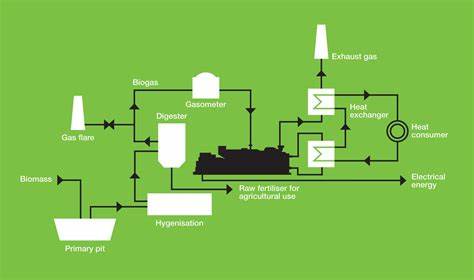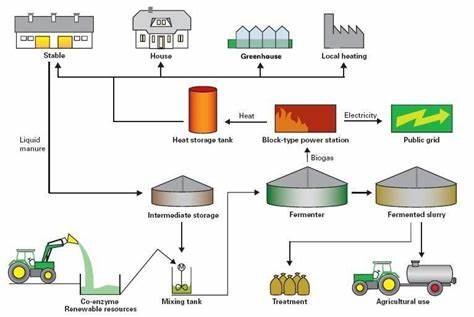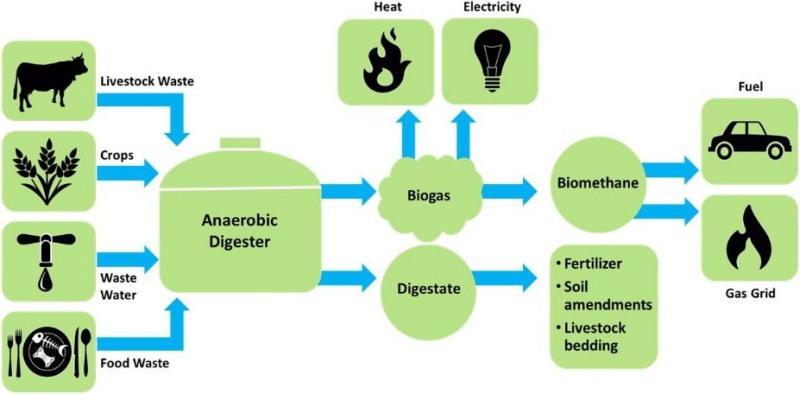
Biomethane: A Sustainable Energy Source for a Greener Future
Introduction
Biomethane is an emerging sustainable energy source that is crucial in achieving long-term sustainability goals. The production of biomethane, which involves harnessing natural gas, not only helps in reducing greenhouse gas emissions but also offers various practical applications in different industries. The increasing interest in this topic is driven by the need for cleaner and more efficient sources of energy to combat climate change and reduce dependence on fossil fuels.
Historical Background
The evolution of biomethane as a sustainable energy source dates back to ancient times when early civilizations used biogas for heating and cooking. Over the years, biomethane has gained recognition as a viable renewable energy source due to its environmentally friendly and economically feasible nature. Historical milestones, such as the development of anaerobic digestion processes and advancements in harnessing natural gas for sustainability, have paved the way for the widespread adoption of biomethane.
Key Concepts and Definitions
Biomethane is a renewable natural gas produced through the anaerobic digestion of organic waste, agricultural byproducts, and other biomass sources. Natural gas, on the other hand, is a fossil fuel found underground and primarily consists of methane. Both biomethane and natural gas play significant roles in sustainability, with biomethane offering a cleaner alternative to traditional natural gas by utilizing organic waste and reducing greenhouse gas emissions.

Main Discussion Points
Biomethane production methods and technologies involve the anaerobic digestion process, where microorganisms break down organic matter in the absence of oxygen. Upgrading techniques, such as pressure swing adsorption and water scrubbing, are employed to remove impurities and increase the methane content. Co-digestion, which blends different organic feedstocks, offers added benefits by enhancing methane production and improving waste management.
The applications and uses of biomethane are diverse and include injecting it into the natural gas grid, using it as a transportation fuel, generating power, and providing heating and cooking solutions. The injection of biomethane into the natural gas grid helps decarbonize the existing gas supply infrastructure. Biomethane as a transportation fuel reduces carbon emissions from vehicles, while its use in power generation reduces reliance on fossil fuel-based electricity. Additionally, biomethane can be utilized for heating and cooking purposes, offering a greener alternative to traditional fuels.
Biomethane brings significant environmental benefits by reducing greenhouse gas emissions. The utilization of organic waste and agricultural byproducts for biomethane production helps divert these materials from landfills, thereby reducing methane emissions. Furthermore, biomethane contributes to enhancing energy security by utilizing local resources and reducing dependency on fossil fuels.
Case Studies or Examples
A biogas facility in a specific location has successfully implemented biomethane production, showcasing the practicality and efficiency of this renewable energy source. By converting organic waste into biomethane, the facility not only reduces its carbon footprint but also generates renewable energy for local use.
Biomethane has been effectively used as a transportation fuel in a specific city or country. By converting vehicles to run on biomethane, the city/country has achieved a significant reduction in both air pollution and greenhouse gas emissions, contributing to a cleaner and greener environment.
The implementation of biomethane injection into the natural gas grid has been observed in a specific region. This initiative not only helps in reducing the carbon intensity of the gas supply but also enables the efficient utilization of biomethane in various sectors, leading to a more sustainable energy system.

Current Trends or Developments
Technological advancements in biomethane production and purification have significantly improved the efficiency and scalability of the process. Innovations in anaerobic digestion, upgrading techniques, and waste management have led to higher biogas yields and increased biomethane purity, making it a more attractive option for energy production.
The global adoption and implementation of biomethane as a sustainable energy source are steadily increasing. Countries around the world are recognizing the potential of biomethane and implementing policies and incentives to encourage its production and utilization, thereby contributing to their renewable energy targets and reducing carbon emissions.
Ongoing research is focused on analyzing the efficiency and scalability of biomethane production. Studies are being conducted to optimize production processes, improve the economics of biomethane, and explore its potential integration with other renewable energy systems, leading to a more efficient and sustainable energy transition.
Challenges or Controversies
The cost-effectiveness of biomethane production remains a challenge due to high initial investment costs associated with setting up anaerobic digestion facilities and upgrading technologies. However, advancements in technology and economies of scale are gradually making biomethane production more financially viable.
Regulatory and policy challenges pose obstacles to the widespread utilization of biomethane. Inconsistent regulations, lack of incentives, and the absence of a supportive policy framework can deter investors and hinder the growth of biomethane projects. Streamlining regulations and implementing favorable policies are crucial for the successful integration of biomethane into the energy mix.
There is an ongoing debate regarding the sustainability of using biomethane as a fossil fuel alternative. Critics argue that biomethane production competes with food production and may have unintended environmental consequences if not managed properly. Balancing the need for sustainable biomethane production with the protection of natural resources is essential for addressing these concerns.

Future Outlook
The potential for growth and expansion of biomethane in the energy sector is significant. As technology advances and economies of scale are realized, biomethane has the potential to become a major player in the transition to a sustainable energy future. Increased investments and supportive policies will further accelerate its growth.
Integrating biomethane into renewable energy systems offers opportunities for a more diversified and resilient energy mix. By combining biomethane with other renewable sources like solar and wind power, a reliable and sustainable energy system can be established, reducing the dependence on conventional energy sources.
Possibilities for international collaboration and knowledge sharing in biomethane production and utilization could lead to accelerated growth and technology transfer. Sharing best practices, research findings, and experiences can help countries overcome challenges and foster a global transition to a more sustainable energy landscape.
Conclusion
In conclusion, biomethane is a sustainable energy source with immense potential for reducing greenhouse gas emissions, utilizing organic waste, and enhancing energy security. By exploring and implementing biomethane production methods and applications, societies can contribute to a greener future. The significance of biomethane and natural gas harnessing in sustainability cannot be overstated, and with continued research, technological advancements, and supportive policies, biomethane can play a pivotal role in achieving a more sustainable and resilient energy system.




